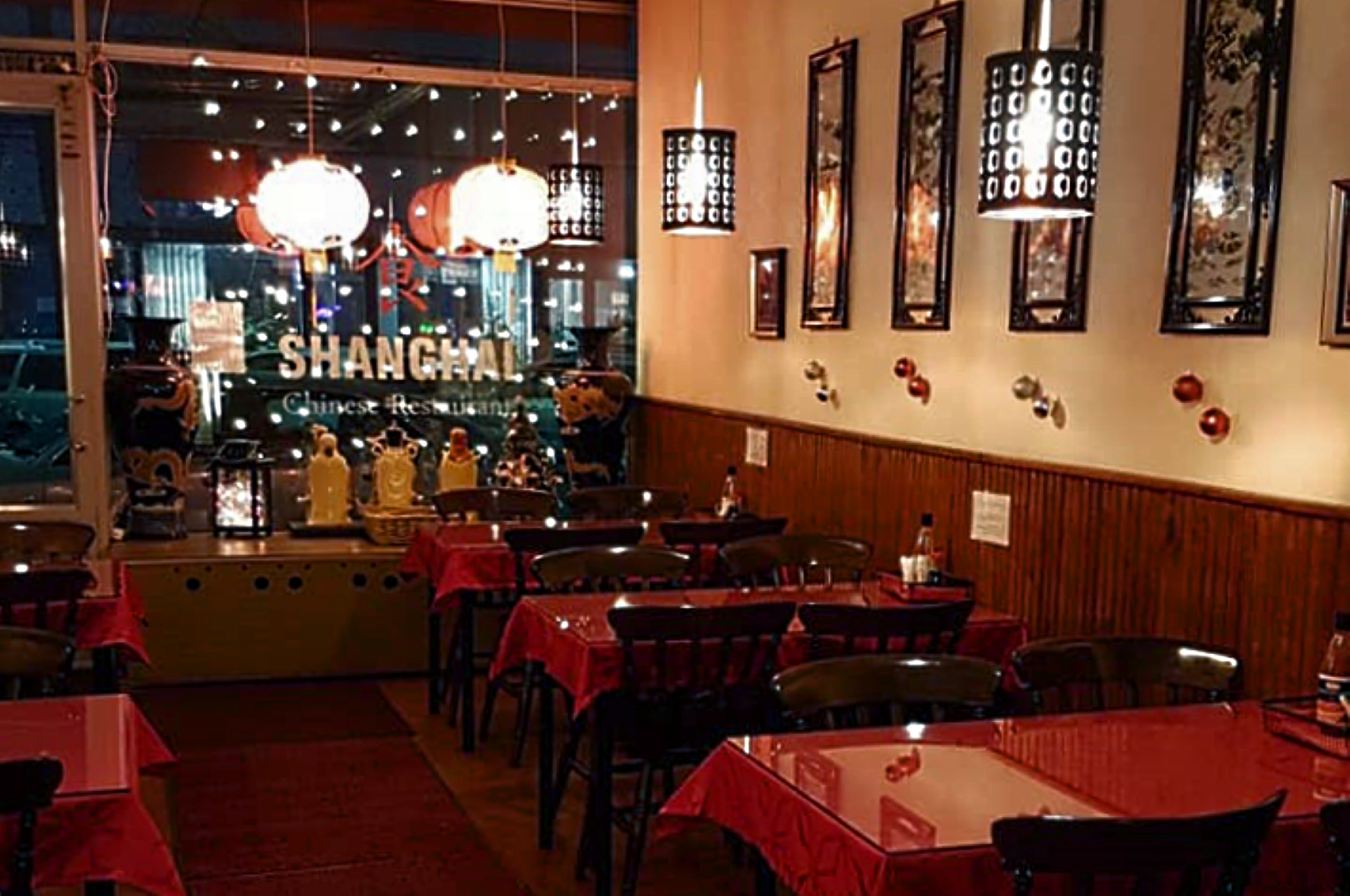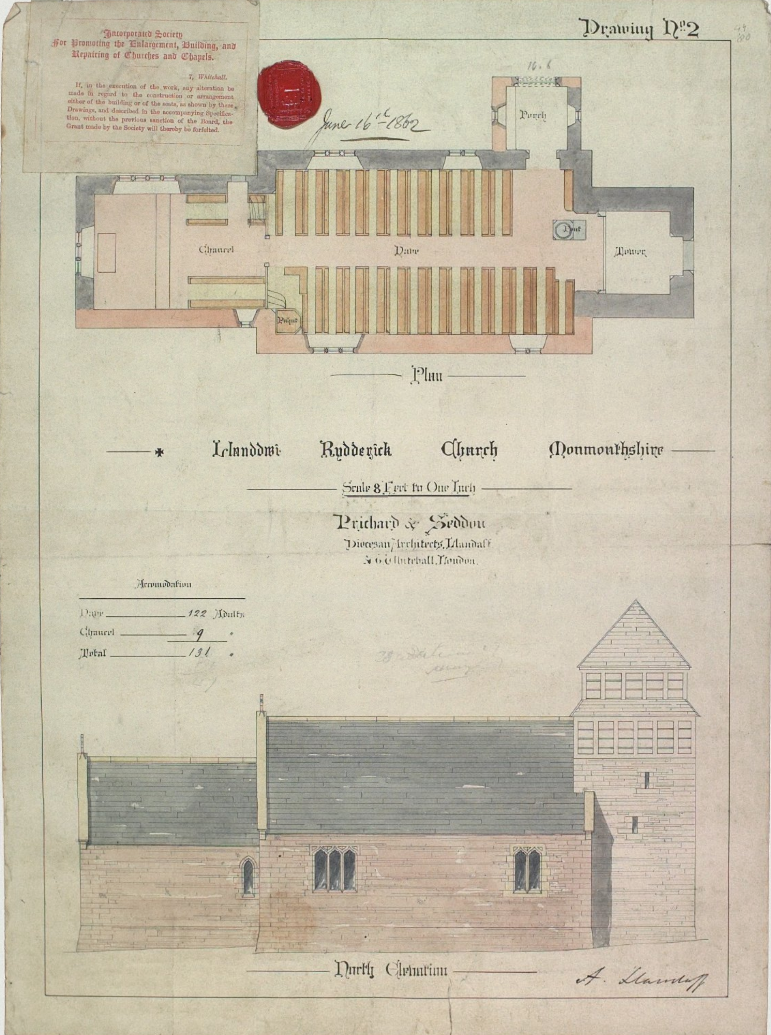|
2-4 High Street, Llandaff
2-4 High Street is a commercial property, currently used as a Chinese restaurant in Llandaff, Cardiff, Wales. The building is a two-storey Grade II listed structure and it was listed because it is "Included as a possible design by John Prichard and for its group value with the other listed buildings around The Cathedral Green and on the High Street". It was built of polychromatic stone and Bath stone. History Cadw believe that both properties (2 and 4 High Street) were probably designed by John Prichard and built around 1863 as a home and premises for Mr. Seaborn, the butcher. built of polychromatic stone and Bath stone. 2-4 High Street is a Grade II listed structure. Other buildings in High Street include St Andrew, St Cross, 6 High Street and 19 High Street that are also Grade II listed. The Chim family owns the property and has done so since 1988. It is today a Cantonese restaurant A Cantonese restaurant is a type of Chinese restaurant that originated in Southern ... [...More Info...] [...Related Items...] OR: [Wikipedia] [Google] [Baidu] |
Chinese Restaurant
A Chinese restaurant is an establishment that serves a Chinese cuisine. Most of them are in the Cantonese cuisine, Cantonese style, due to the history of the Overseas Chinese, Chinese diaspora and adapted to local taste preferences, as in the American Chinese cuisine and Canadian Chinese cuisine. The Chinese restaurants in the Netherlands usually Chinese Indonesian cuisine, combine Cantonese and Indonesian cuisine, Indonesian meals on their menu. ''Chinese takeouts'' (United States and Canada) or ''Chinese takeaways'' (United Kingdom and Commonwealth of Nations, Commonwealth) are terms to describe the act of ordering the meal(s) with the intent to eat the food at another location, such as at work or home. It can be found either as a service option of eat-in establishments or as separate establishments. History United States Chinese restaurants in the United States began during the California gold rush, which brought twenty to thirty thousand immigrants across from the C ... [...More Info...] [...Related Items...] OR: [Wikipedia] [Google] [Baidu] |
Cadw
(, a Welsh verbal noun meaning "keeping/preserving") is the historic environment service of the Welsh Government and part of the Tourism and Culture group. works to protect the historic buildings and structures, the landscapes and heritage sites of Wales, to make them available for the public to visit, enjoy, and understand their significance. manages 127 state-owned properties and sites. It arranges events at its managed properties, provides lectures and teaching sessions, offers heritage walks, and hosts an online shop. Members of the public can become members of to gain membership privileges. Aims and objectives As the Welsh Government's historic environment service, is charged with protecting the historic environment of Wales, and making it accessible to members of the public. To this end, in 2010–11 it identified four aspects of its work: it would take measures to conserve the heritage of Wales, its ancient buildings, and monuments; it would aim to sustain the dist ... [...More Info...] [...Related Items...] OR: [Wikipedia] [Google] [Baidu] |
WalesOnline
Media Wales Ltd. is a publishing company based in Cardiff, Wales. As of 2009 it was owned by Reach plc (formerly known as the Trinity Mirror Group). It was previously known as the Western Mail & Echo Ltd. History The ''Western Mail'' was founded in 1869 by the 3rd Marquess of Bute as a Conservative newspaper. In 1893, the original building in St. Mary Street was destroyed by fire and a new building was opened also in St Mary Street two years later. In 1928 the Western Mail Ltd amalgamated with David Duncan & Sons, who published the ''South Wales Daily News'' and the ''South Wales Echo'', which was established in 1884. The merged company became Western Mail and Echo Ltd. and because of the merger ''Evening Express'' and ''South Wales Daily'' News closed. In 1960, the newspapers left St Mary Street and moved to Thomson House, Cardiff. On 1 October 2007 Western Mail and Echo Ltd changed its name to Media Wales, and in 2008 Media Wales moved from Thomson House in Havelock Str ... [...More Info...] [...Related Items...] OR: [Wikipedia] [Google] [Baidu] |
Cantonese Restaurant
A Cantonese restaurant is a type of Chinese restaurant that originated in Southern China. This style of restaurant has rapidly become common in Hong Kong. History Some of the earliest restaurants in Colonial Hong Kong were influenced by Cantonese people.Wiltshire, Trea. irst published 1987(republished & reduced 2003). Old Hong Kong - Volume One. Central, Hong Kong: Text Form Asia books Ltd. ISBN Volume One 962-7283-59-2 Throughout the history of Hong Kong cuisine, a great deal of Southern China's diet became synonymous with Cantonese-style food. Following the emigration of Cantonese people from Hong Kong to Southeast Asia and the Western world, these authentic Cantonese restaurants began appearing in many Chinatowns overseas. From 1980 to 1986, an estimated 21,000 people permanently left Hong Kong each year, and from 1987 the numbers rose sharply to 48,000 people a year and continued to increase dramatically following the Tiananmen Square protests of 1989. Many Chinese rest ... [...More Info...] [...Related Items...] OR: [Wikipedia] [Google] [Baidu] |
19 High Street, Llandaff
19 High Street is a small mid-19th-century residential domestic building in Llandaff, Cardiff, Wales. The building is a two-storey Grade II listed structure and it was listed because it is "Included for its group value with the other listed buildings around The Cathedral Green and on the High Street". History Cadw believe that the small house was probably built in the mid-19th century in the 17th century style. The house is built of roughly coursed multi-coloured Radyr stone with some cut stones. Other buildings in High Street include St Andrew Andrew the Apostle ( grc-koi, Ἀνδρέᾱς, Andréās ; la, Andrēās ; , syc, ܐܰܢܕ݁ܪܶܐܘܳܣ, ʾAnd’reʾwās), also called Saint Andrew, was an apostle of Jesus according to the New Testament. He is the brother of Simon Peter ..., St Cross, 2-4 High Street and 6 High Street that are also Grade II listed. References External links * {{Cardiff-geo-stub High Street, 19, Llandaff High Street, Llandaff [...More Info...] [...Related Items...] OR: [Wikipedia] [Google] [Baidu] |
6 High Street, Llandaff
6 High Street is an 18th-century building in Llandaff, Cardiff, Wales. It was possibly built as a one and a half storey building in the early 18th century of thick rubble masonry and in was extended to a three-storey building. It is thought to have been part of the old farm on The Cathedral Green, Llandaff, which was demolished in the early 19th century. Today the building is a teahouse. The building is a Grade II listed Listed may refer to: * Listed, Bornholm, a fishing village on the Danish island of Bornholm * Listed (MMM program), a television show on MuchMoreMusic * Endangered species in biology * Listed building, in architecture, designation of a historicall ... structure and it was listed because it is "Included as a largely C18 house and for its group value with the other listed buildings around The Cathedral Green and on the High Street." References External links * {{Commons category-inline High Street, 6, Llandaff High Street, Llandaff ... [...More Info...] [...Related Items...] OR: [Wikipedia] [Google] [Baidu] |
St Cross, Llandaff
St Cross is a 19th-century residential domestic building in Llandaff, Cardiff, Wales. The building is a two-storey Grade II listed structure and it was listed because it is "Included as an unaltered design by Ewan Christian and for its group value with the other listed buildings around The Cathedral Green and on the High Street". The garden wall of St Cross is also a Grade II structure. History The building was built between 1859 and 1861 by Ewan Christian, who was the architect for the Ecclesiastical Commissioners. It is a right-hand house with its neighbour being St Andrew. Both semi-detached houses were built for minor canons of Llandaff Cathedral. It was built with multi-coloured stones, both square or rectangular in shape, and with Bath stone, ashlar dressings and Welsh slate The existence of a slate industry in Wales is attested since the Roman period, when slate was used to roof the fort at Segontium, now Caernarfon. The slate industry grew slowly until the early 1 ... [...More Info...] [...Related Items...] OR: [Wikipedia] [Google] [Baidu] |
St Andrew, Llandaff
St Andrew, with the address of 1 High Street, is a 19th-century residential building in Llandaff, Cardiff, Wales. The building is a two-storey Grade II listed structure and it was listed because it is "Included as an unaltered design by Ewan Christian and for its group value with the other listed buildings around the Cathedral Green and on the High Street". The garden wall of St Andrew is also a Grade II structure. History The building was built between 1859 and 1861 by Ewan Christian, who was the architect for the Ecclesiastical Commissioners. It is a left-hand house with its neighbour being St Cross. Both semi-detached houses were built for minor canons of Llandaff Cathedral. It was built with multi-coloured stones, both square or rectangular in shape, and with Bath stone, ashlar dressings and Welsh slate roof. The buildings match Cathedral Court on the other side of the cathedral green, which Christian designed as the deanery. John Newman, in his ''Glamorgan'' volume of the ... [...More Info...] [...Related Items...] OR: [Wikipedia] [Google] [Baidu] |
Bath Stone
Bath Stone is an oolitic limestone comprising granular fragments of calcium carbonate. Originally obtained from the Combe Down and Bathampton Down Mines under Combe Down, Somerset, England. Its honey colouring gives the World Heritage City of Bath, England its distinctive appearance. An important feature of Bath Stone is that it is a ' freestone', so-called because it can be sawn or 'squared up' in any direction, unlike other rocks such as slate, which form distinct layers. Bath Stone has been used extensively as a building material throughout southern England, for churches, houses, and public buildings such as railway stations. Some quarries are still in use, but the majority have been converted to other purposes or are being filled in. Geological formation Bath Stone is an oolitic limestone comprising granular fragments of calcium carbonate laid down during the Jurassic Period (195 to 135 million years ago) when the region that is now Bath was under a shallow sea. Layer ... [...More Info...] [...Related Items...] OR: [Wikipedia] [Google] [Baidu] |
Cardiff
Cardiff (; cy, Caerdydd ) is the capital and largest city of Wales. It forms a principal area, officially known as the City and County of Cardiff ( cy, Dinas a Sir Caerdydd, links=no), and the city is the eleventh-largest in the United Kingdom. Located in the south-east of Wales and in the Cardiff Capital Region, Cardiff is the county town of the historic county of Glamorgan and in 1974–1996 of South Glamorgan. It belongs to the Eurocities network of the largest European cities. A small town until the early 19th century, its prominence as a port for coal when mining began in the region helped its expansion. In 1905, it was ranked as a city and in 1955 proclaimed capital of Wales. Cardiff Built-up Area covers a larger area outside the county boundary, including the towns of Dinas Powys and Penarth. Cardiff is the main commercial centre of Wales as well as the base for the Senedd. At the 2021 census, the unitary authority area population was put at 362,400. The popula ... [...More Info...] [...Related Items...] OR: [Wikipedia] [Google] [Baidu] |
Polychrome
Polychrome is the "practice of decorating architectural elements, sculpture, etc., in a variety of colors." The term is used to refer to certain styles of architecture, pottery or sculpture in multiple colors. Ancient Egypt Colossal statue of Tutankhamun Paris 2019 A.jpg, Polychrome quartzite colossal statue of Tutankhamun, 1355-1315 BC Nofretete Neues Museum.jpg, Polychrome limestone and plaster ''Bust of Nefertiti'', 1352–1336 BC Composite Papyrus Capital MET 10.177.2 EGDP018080.jpg, Polychrome sandstone Composite papyrus capital, 380–343 BC Medinet Habu 2016-03-23g.jpg, Polychrome winged sun on a cavetto from the Medinet Habu temple complex, unknown date Classical world Some very early polychrome pottery has been excavated on Minoan Crete such as at the Bronze Age site of Phaistos. In ancient Greece sculptures were painted in strong colors. The paint was frequently limited to parts depicting clothing, hair, and so on, with the skin left in the natural co ... [...More Info...] [...Related Items...] OR: [Wikipedia] [Google] [Baidu] |
John Prichard
John Prichard (6 May 1817 – 13 October 1886) was a Welsh architect in the neo-Gothic style. As diocesan architect of Llandaff, he was involved in the building or restoration of many churches in south Wales. Personal history John Prichard was born in Llangan, near Cowbridge, Wales on 6 May 1817, the twelfth son of the rector Richard Prichard, who served as vicar-choral of Llandaff for 35 years. He was descended from the Prichard family of Collenna. John Prichard trained as an architect under Thomas Larkins Walker, and as a result was deeply influenced by the ideas of Augustus Pugin; much of his work was in a neo-Gothic style. He established a practice in Llandaff, Cardiff, becoming 'Resident Diocesan Architect' in December 1844. Between 1852 and 1863 he was in partnership with John Pollard Seddon. Many of his major commissions were restoration works, most famously for Llandaff Cathedral (1843–69); Prichard and Seddon worked on the cathedral from the 1840s until 1869, when ... [...More Info...] [...Related Items...] OR: [Wikipedia] [Google] [Baidu] |





